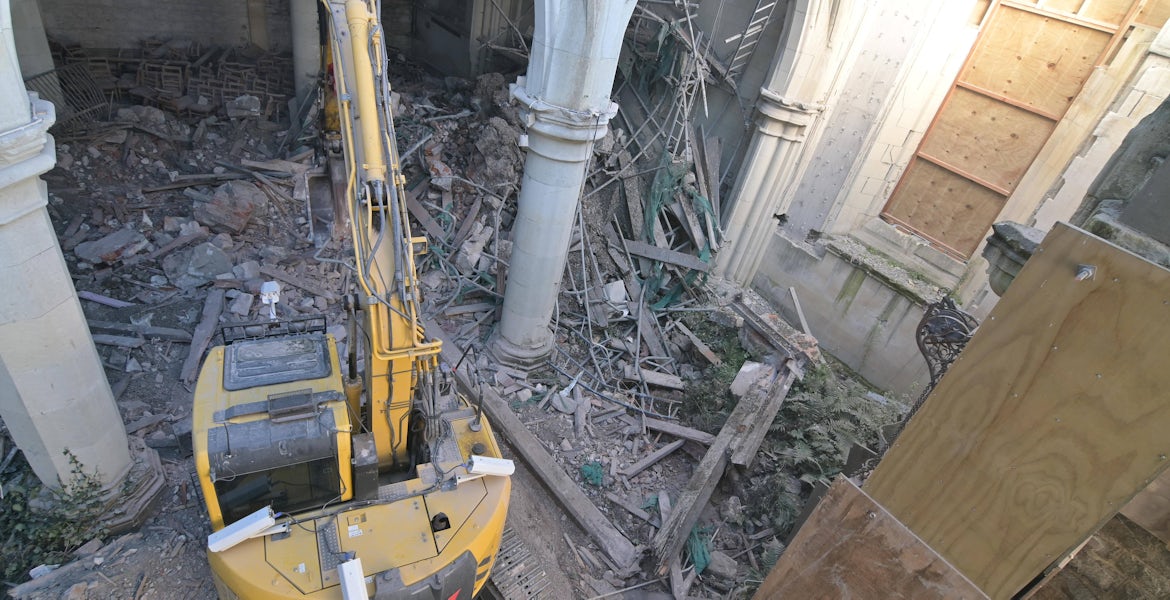World first, remote-operated digger working inside Cathedral
25 May 2022Media ReleaseNews
In a world first, a remote-operated digger is working inside Christ Church Cathedral to clear out debris, masonry and guano, a significant biohazard, and retrieve heritage fabric.
The project marks the start of the major interior clean up and is another milestone in the Cathedral’s reinstatement journey.
Controlled from an operations centre outside the Cathedral using specially fitted cameras with live stream capability, the remote-operated digger is an innovative digital solution to keep workers safe.
It has also permitted the Cathedral’s interior clean up to begin early, allowing the project’s critical work plan to gain about three months.
Project Director, Keith Paterson says, “introducing a remote-operated digger is a safety-first approach that solves health and safety issues by keeping personnel out of the building while still getting the work done. A manned digger would be at risk of falling debris or building collapse were an earthquake to occur at this stage of the project.”
Personnel from project partners Protranz Earthmoving Ltd and Aurecon, who first suggested the use of the remote-operated digger, are operating it.
“We don’t have line of sight of the digger inside the Cathedral, we can only see it via screens inside the operations centre,” says Simon Gaynor, Protranz Commercial Manager.
“In preparation, we set up a testing area that mirrors the internal geometry of the Cathedral and have been rehearsing over the past few months to get comfortable with the kit and ensure we could proceed safely.”
Aurecon’s Design Technologist, Simon Yorke says, “the remote camera system includes five individual cameras fitted at different points on the digger to relay real-time video back to the operations centre outside. A sixth camera, located inside the Cathedral, gives the operator a bird’s eye view of the location of the digger.”
With the safe retrieveal of heritage fabric a top priority for the Christ Church Cathedral Reinstatment Project, the digger is carefully focusing on specific areas.
“We know there are several items of interest inside the nave, such as the old font. The digger will move carefully through the areas we think these items might be located in the hope we can retrieve them. Our heritage professional will then sift through everything collected to find any precious items before the rest is disposed of,” says Keith Paterson.
A special enclosure has been built on the Cathedral worksite to provide a wash down area for the digger and to allow skips to be removed and re introduced.
The remote-operated digger is working in the Cathedral for the next six weeks.
